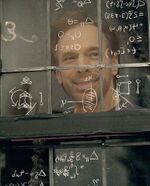Quaid Disaster Theorem
The Quaid Disaster Theorem is a relation between disaster movies and Quaids.
The theorem is expressed as follows:
In any disaster movie, the number of Quaids must be equal to or greater than one
We denote the number of Quaids in a movie M as
We let p denote the Quaid density function on a movie space. The number of Quaids in a movie M is then
But we can convert the p into a corresponding opening and closing credits function P. We thus convert the above integral to the line integral
Of course, in a disaster movie, the number of pole singularities is equal to the number of disasters, so the right-hand side is greater than 1, and hence:
This means in layman's terms that any movie surrounding some sort of natural disaster or series of natural disasters must also feature at least one actor named Quaid.
History[edit]
The theorem is attributed to noted mathemetician Jerry Bruckheimer, who discovered when experimenting with flashy and superficial special effects that the effects were more believable when complemented by the incredible acting of either Dennis or Randy Quaid.
Proofs[edit]
- The Day After Tomorrow
- Category 6: Day of Destruction
- Category 7: The End of the World
- The Day the World Ended
- Independence Day
- Jaws 3-D
- Wilder Napalm
- Hard Rain
Single Counter-vailing Argument[edit]
- The Long Riders
Other applications[edit]
Under an alternative definition for disaster, the theorem can also be applied to Caddyshack II.




